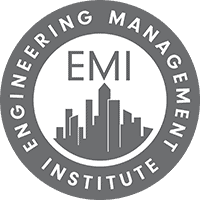This is a guest blog by Amanda Jerelyn
Without a proper career path in front of you, chances for further progress seem diluted at best. An engineering growth framework addresses such concerns expediently by providing ground rules and a wide-ranging action plan for those who wish to move ahead in their careers.
The growth framework offers tremendous insights; it focuses on how current jobs and operations can be improved, opens new doors for future opportunities, and accomplishes organizational goals, missions, and objectives.
An all-inclusive engineering growth framework also makes the entire process extremely fair and transparent so that there aren’t any blind corners or discrepancies for those who wish to evaluate their own performance. Both employees and employers can be on the same page, as well as know precisely what the next step should be.
It also acts as a definite tool to keep engineers aware of where they stand and what they need to do in order to move up the ladder. It therefore becomes quite a dominant motivational factor for those who identify themselves as a “go-getter”!
How to Utilize an Engineering Growth Framework
1. Determine Roles and Job Descriptions
The first thing you need to do to make use of an Engineering Growth Framework is to talk with your managers and other decision-makers in the company to identify specific roles delegated to engineers within your corporation or institution.
This will help you understand why each role is vital for your establishment; it will also help you understand the processes involved in that role that make it a significant part of your company. The job description not only helps to identify all the tasks related to a particular role, but also other related duties and responsibilities associated with that position.
2. Demarcate Levels for Each Role
After determining each role, you are now set to develop a career path for those roles. These paths are intended to show the different levels each role can have. In other words, you are essentially setting the hierarchy for each job that is offered at your organization.
This can include officers, senior officers, managers, team leads, and even directors at the topmost level. By dividing each role’s career path into different levels, you are actually setting milestones for your employees to accomplish in order to seek out promotions in the upcoming years.
These can also be yearly targets or any other requirements they need to fulfill in order to achieve a promotion to the next level in their career path.
3. Set Milestones for Each Level
Milestones can also work as an excellent incentive for each level; you can intrinsically motivate your engineers to show continuous support for the organization over a prolonged period of time to achieve a higher position in the company. These milestones are essentially performance indicators that can determine whether a candidate is worthy of promotion or not.
The more milestones your engineer achieves, the closer they move toward achieving a promotion soon. These milestones can also work as record-keeping tools, where you can see each person’s overall progress by merely taking a glance at which milestone they are nearing at the current time.
4. Track Progress & Measure Performance
While laying down a milestone is a good idea, what is more important is that you keep a definite and detailed track of each of your employees’ tasks as well as their day-to-day performance. This will allow you to make quick and easy decisions in the future.
You can define the mechanics and other tactics to make sure that each person’s day-to-day activities on the job are monitored and recorded to keep track of their daily progress. Or you can simply provide weekly and monthly targets and adjust your judgment based on those targets every week or month.
At times, companies even give out yearly goals just to make the lives of their subordinates less stressful. This might feel like a hefty task even for professionals (especially those who offer ), but we assure you that it is totally worth the effort.
5. Conduct Appraisals & Award Promotions
After conducting a comprehensive analysis of the data that you have collected for each subordinate, your managers and supervisors must then give their professional feedback regarding each employee’s performance.
This is formally known as an appraisal and should only be conducted using official channels and with the right set of authority delegating the agenda. In a nutshell, this is the core purpose and reason for developing an engineering growth framework.
All of your engineers are focused on the judgments and evaluations that you make during this time period.
6. Test Your Framework for Redundancies
Even when your engineering growth framework is complete, you need to test it out to see if it fits your organizational goals and objectives in an appropriate manner. So try out your new model a couple of times first.
This will often guide you to make improvements to the existing model. You might come across some redundancies or discrepancies that might have slipped through without your notice. Once you are sure that all shortcomings of your proposed model have been removed, only then you should move towards the actual execution phase.
7. Implement the System & Record Feedback
The time has finally arrived to implement your growth framework to its full effect. While you execute your model and make people aware of it by using the proper channels, remain open to feedback and constructive criticism that can help you make improvements.
If you find something genuinely worthy, then you might also propose to implement changes to your framework in the near future.
Conclusion
The growth framework for engineers is an essential part of any organization that deploys engineers to perform various tasks and day-to-day operations. It helps keep employees motivated and allows them to look at the big picture ahead.
In some cases, it can even help you retain valuable members of your team and help you earn their lifelong loyalty. Since the system for growth framework is based on transparency and complete fairness, you will hardly find any skilled worker out there opposing the idea.
About The Author
Amanda Jerelyn currently works as a Business Manager at Crowd Writer, where higher education students can write my essay for money or acquire help regarding their related academic work from professional writers. During her free time, she likes to explore the outdoors with her spirit animal, a pet Dalmatian.
We would love to hear any questions you might have or stories you might share about the type of growth framework you use to create opportunities for growth.
Please leave your comments, feedback or questions in the section below.
To your success,
Anthony Fasano, PE, LEED AP
Engineering Management Institute
Author of Engineer Your Own Success






